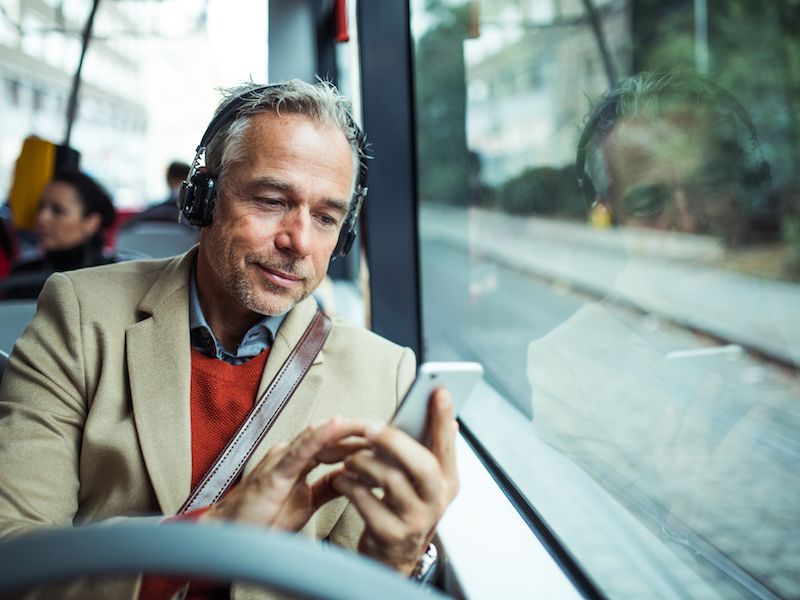
Traditionally, hearing loss is thought of as an issue only impacting older people – as a matter of fact, it’s estimated that around 50% of people who suffer from loss of hearing are 75 or older. But a new study shows that younger people are at risk for hearing loss – and, alarmingly, they are losing their hearing even though it’s completely avoidable.
The National Foundation for the Deaf and Hard of Hearing recently carried out a study of 479 freshmen spanning three high schools and found that there were indications of hearing loss in 34% of them. Why is this happening? Mobile devices with headphones or earbuds connected are believed to be the most likely culprit. And older individuals are also at risk.
In People Who Are Under 60, What Causes Hearing Loss?
There’s an easy rule concerning earbud volume for teenagers and everybody else – if other people can hear your music, then the volume is too high. Harm to your hearing can happen when you listen to noises above 85 decibels – which is approximately the sound of a vacuum cleaner – over a long period of time. A normal mobile device with the volume cranked up to the max registers at around 106 decibels. In this situation, damage starts to develop in less than 4 minutes.
Though this seems like common sense stuff, the reality is kids spend in excess of two hours every day using their devices, commonly with their earphones or earbuds plugged in. They’re listening to music, playing games, or watching videos during this time. And this time is increasing each year according to current research. Studies show that dopamine is stimulated by smartphones and other devices that have screens, in younger kids’ brains, which is exactly what addictive drugs do. It will be more and more difficult to get kids to put down their screens, and their hearing may suffer as a result.
How Much Are Young Kids in Danger of Hearing Loss?
Irrespective of age, it’s clear that loss of hearing offers several struggles. Younger people, though, have to deal with additional issues concerning after school sports, job prospects, and even academics. The student is put at a disadvantage if they have a difficult time hearing and understanding concepts during class because of early hearing loss. And since sports involve a lot of listening to coaches and teammates calling plays, sports become far more difficult. Teenagers and younger adults who are entering the workforce will have unnecessary obstacles if their loss of hearing has a negative effect on their confidence.
Social issues can also continue due to loss of hearing. Kids whose hearing is damaged have a harder time socializing with peers, which frequently leads to emotional and social problems that require therapy. Mental health issues are ordinary in people of all ages who have hearing loss because they commonly feel separated and have anxiety and depression. Treating hearing loss often must go hand-in-hand with mental health treatment, particularly during the important formative phases experienced by teenagers and kids.
How You Can Steer Clear of Loss of Hearing?
The first rule to follow is the 60/60 rule – offending devices should be at less than 60% of their maximum volume for no more than 1 hour each day. If your kids listen to headphones at 60% and you can still hear the sound while you are near them, you should tell them to turn it down until you can no longer hear it.
Also older style over-the-ear headphones might be a better choice than earbuds. Earbuds, placed directly in the ear can actually generate 6 to 9 extra decibels in comparison to conventional headphones.
Throughout the day in general, you should do everything possible to reduce your exposure to loud noise. If you try to listen to your tunes without headphones, that is one of the few things you can keep have control of. And, you should see us immediately if you suspect you are already suffering from hearing loss.